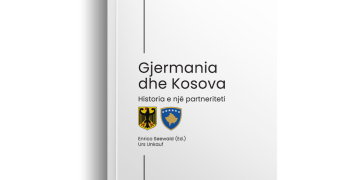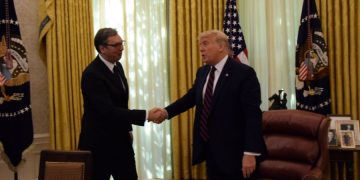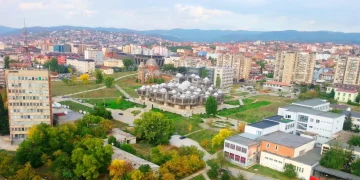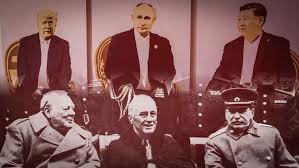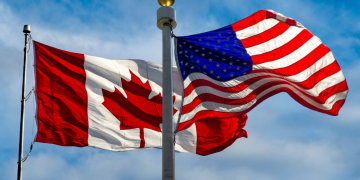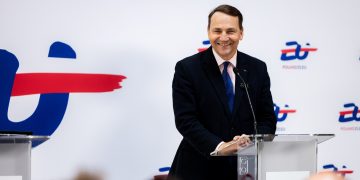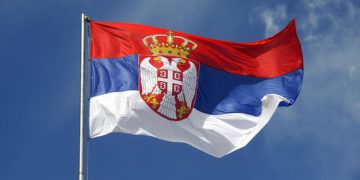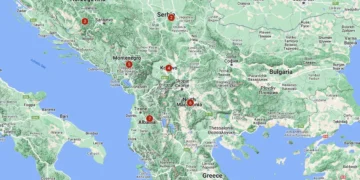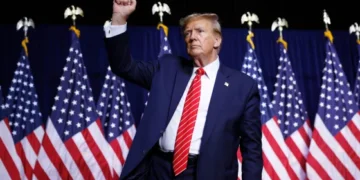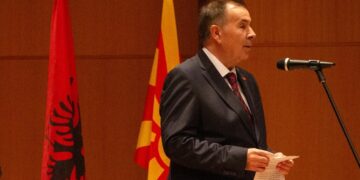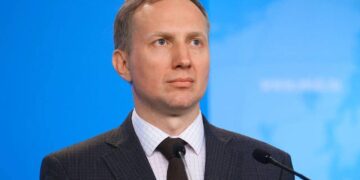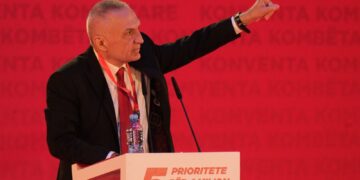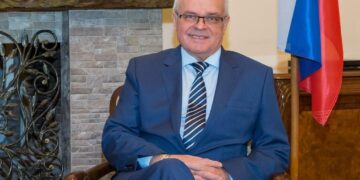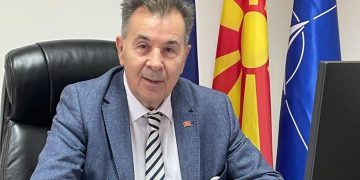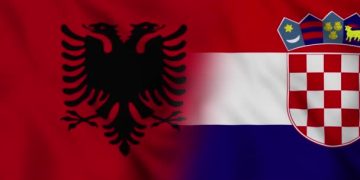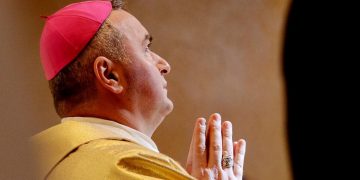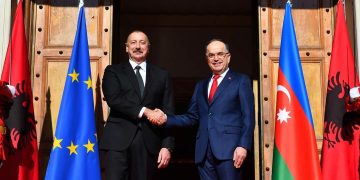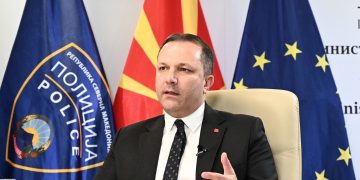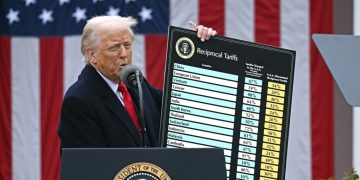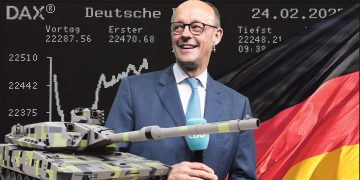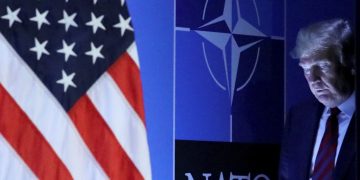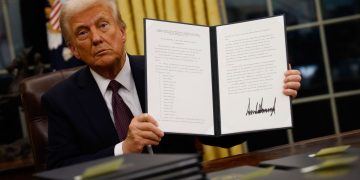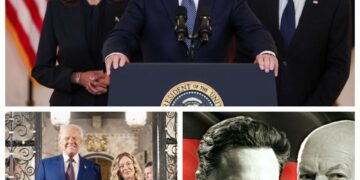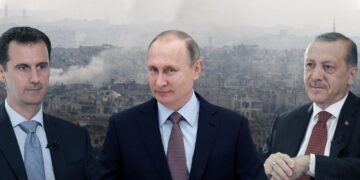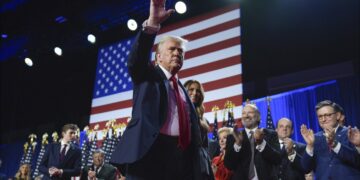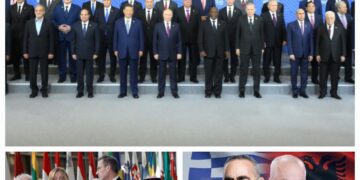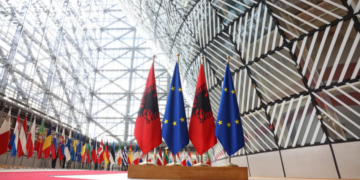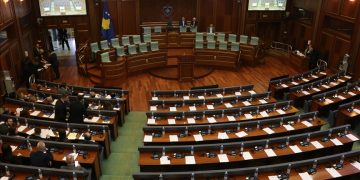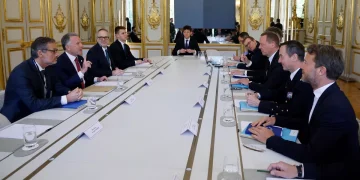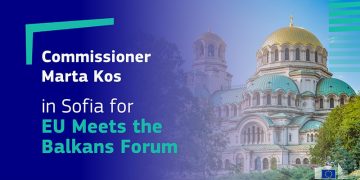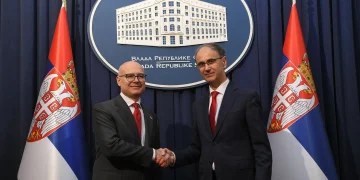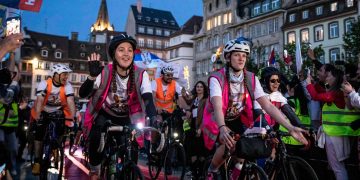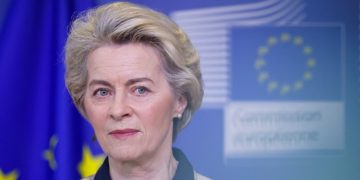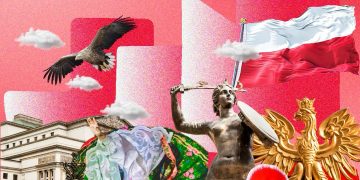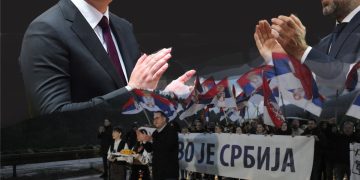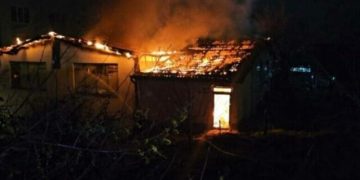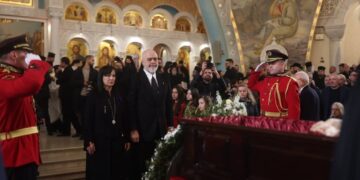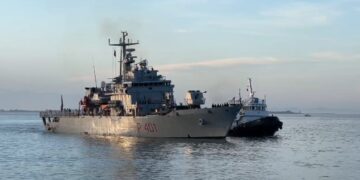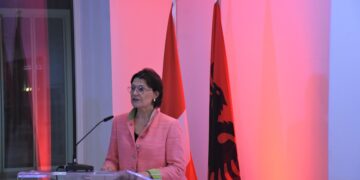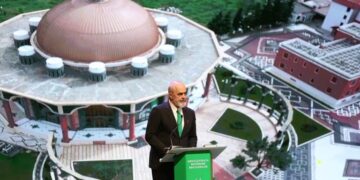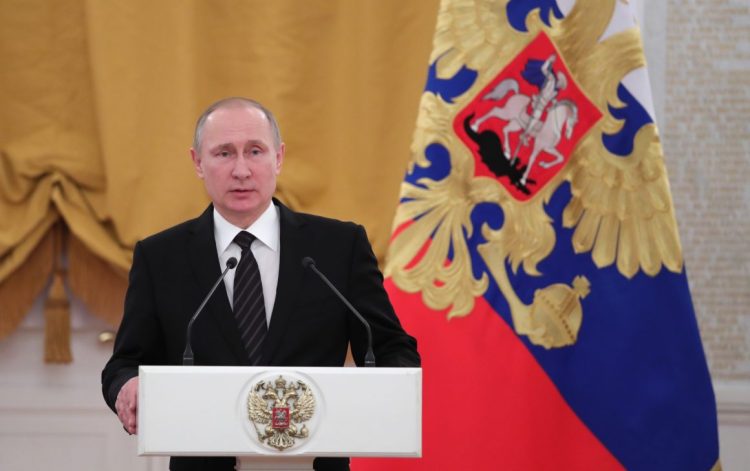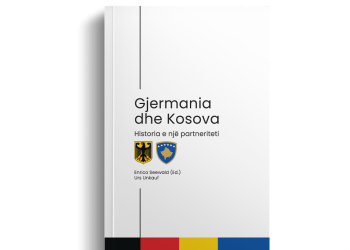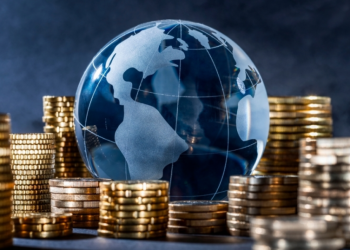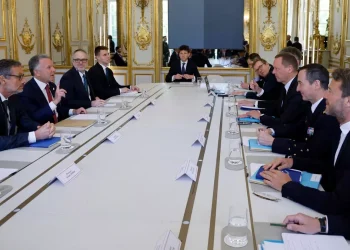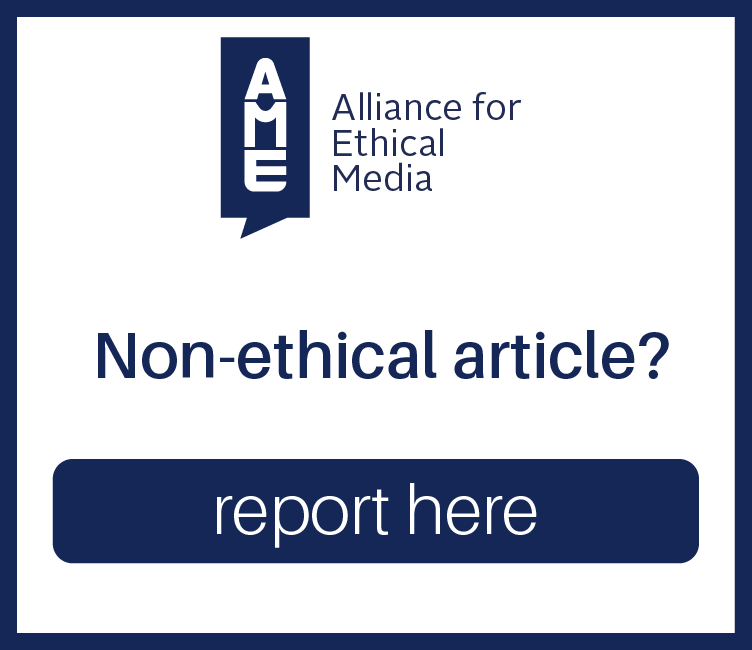Recently, answering a question about Russian-Ukrainian relations during the Direct Line, he said that Russians and Ukrainians are one people, a single whole. These words are not a tribute to some conjuncture, current political circumstances. I have spoken about this more than once, this is my conviction. Therefore, I consider it necessary to state my position in detail and share my assessments of the current situation.
Let me emphasize right away that I perceive the wall that has emerged in recent years between Russia and Ukraine, between parts of, in fact, one historical and spiritual space, as a great common misfortune, as a tragedy. These are, first of all, the consequences of our own mistakes made in different periods. But also the result of the purposeful work of those forces that have always sought to undermine our unity. The formula that is used is known from time immemorial: divide and conquer. Nothing new. Hence the attempts to play on the national question, to sow discord between people. And as a super task – to divide, and then play off parts of a single people among themselves.
To better understand the present and look into the future, we must turn to history. Of course, within the framework of the article it is impossible to cover all the events that have occurred over a thousand years. But I will dwell on those key, turning points that are important for us – both in Russia and in Ukraine – to remember.
Both Russians, Ukrainians, and Belarusians are the heirs of Ancient Rus, which was the largest state in Europe. Slavic and other tribes in a vast area – from Ladoga, Novgorod, Pskov to Kiev and Chernigov – were united by one language (now we call it Old Russian), economic ties, the rule of the princes of the Rurik dynasty. And after the baptism of Russia – and one Orthodox faith. The spiritual choice of Saint Vladimir, who was both Novgorod and the Great Kiev prince, and today largely determines our kinship.
The Kiev princely table occupied a dominant position in the Old Russian state. This has been the practice since the end of the 9th century. The words of Prophetic Oleg about Kiev: “Let it be a mother to Russian cities” – kept for posterity “The Tale of Bygone Years”.
Later, like other European states of that time, Ancient Rus was faced with a weakening of central power, fragmentation. At the same time, both nobility and ordinary people perceived Russia as a common space, as their Motherland.
After the devastating invasion of Batu, when many cities, including Kiev, were devastated, fragmentation intensified. Northeastern Russia fell into the Horde dependence, but retained limited sovereignty. The southern and western Russian lands were mainly included in the Grand Duchy of Lithuania, which, I want to draw your attention to, was called the Grand Duchy of Lithuania and Russia in historical documents.
Representatives of the princely and boyar families passed to the service from one prince to another, were at enmity with each other, but also made friends, entered into alliances. On the Kulikovo field, next to the Grand Duke of Moscow Dmitry Ivanovich, the voivode Bobrok from Volhynia fought, the sons of the Grand Duke of Lithuania Olgerd – Andrei Polotsky and Dmitry Bryanskiy. At the same time, the Grand Duke of Lithuania Yagailo, the son of the Tver princess, led his troops to join Mamai. All these are pages of our common history, a reflection of its complexity and multidimensionality.
It is important to note that both the western and eastern Russian lands spoke the same language. Vera was Orthodox. Until the middle of the 15th century, a single church administration was preserved.
At a new stage of historical development, both Lithuanian Rus and the strengthening Muscovite Rus could become points of attraction, consolidation of the territories of Ancient Rus. History decreed that Moscow became the center of reunification, which continued the tradition of ancient Russian statehood. The Moscow princes – the descendants of Prince Alexander Nevsky – threw off the external yoke, began to collect historical Russian lands.
Different processes were going on in the Grand Duchy of Lithuania. In the 14th century, the ruling elite of Lithuania converted to Catholicism. In the 16th century, the Union of Lublin with the Kingdom of Poland was concluded – the Rzeczpospolita of Both Peoples was formed (in fact, Polish and Lithuanian). The Polish Catholic nobility received significant land holdings and privileges on the territory of Russia. According to the Union of Brest in 1596, part of the Western Russian Orthodox clergy submitted to the authority of the Pope. Polonization and romanization were carried out, Orthodoxy was supplanted.
As a response, in the XVI-XVII centuries the liberation movement of the Orthodox population of the Dnieper region grew. The events of the times of Hetman Bohdan Khmelnytsky became a turning point. His supporters tried to achieve autonomy from the Polish-Lithuanian Commonwealth.
In the petition of the Zaporozhye Army to the king of the Polish-Lithuanian Commonwealth in 1649, it was said about the observance of the rights of the Russian Orthodox population, about the fact that “the Kiev governor should be the Russian people and the Greek law, so that he would not step on the church of God …” But the Cossacks did not hear.
B. Khmelnitsky’s appeals to Moscow followed, which were considered by Zemsky Sobors. On October 1, 1653, this supreme representative body of the Russian state decided to support co-religionists and take them under patronage. In January 1654, the Pereyaslav Rada confirmed this decision. Then the ambassadors of B. Khmelnitsky and Moscow toured dozens of cities, including Kiev, whose residents took an oath to the Russian tsar. By the way, there was nothing of the kind at the conclusion of the Union of Lublin.
In a letter to Moscow in 1654, B. Khmelnitsky thanked Tsar Alexei Mikhailovich for the fact that he “deigned to accept the entire Zaporozhian Army and the whole Russian Orthodox world under the strong and high arm of his tsarist”. That is, in appeals to both the Polish king and the Russian tsar, the Cossacks called and defined themselves as Russian Orthodox people.
In the course of the protracted war of the Russian state with the Commonwealth, some of the hetmans, the heirs of B. Khmelnitsky, sometimes “deferred” from Moscow, then they sought support from Sweden, Poland, and Turkey. But, I repeat, for the people, the war was, in fact, a liberating one. It ended with the Andrusovo truce of 1667. The final results were fixed by the “Eternal Peace” of 1686. The Russian state included the city of Kiev and the lands of the left bank of the Dnieper, including Poltava, Chernigov, and Zaporozhye. Their inhabitants were reunited with the main part of the Russian Orthodox people. For this region itself, the name “Little Russia” (Little Russia) was established.
The name “Ukraine” was then used more often in the sense in which the Old Russian word “outskirts” has been found in written sources since the 12th century, when it was a question of various border territories. And the word “Ukrainian”, judging also by the archival documents, originally meant border service people who ensured the protection of external borders.
On the Right Bank, which remained in the Commonwealth, the old order was restored, social and religious oppression increased. The left bank, the lands taken under the protection of a single state, on the contrary, began to actively develop. Residents from the other bank of the Dnieper moved here en masse. They sought support from people of one language and, of course, one faith.
During the Northern War with Sweden, the inhabitants of Little Russia did not have a choice – with whom to be. Mazepa’s rebellion was supported by only a small part of the Cossacks. People of different classes considered themselves Russian and Orthodox.
Representatives of the Cossack elders, included in the nobility, reached the heights of political, diplomatic, military careers in Russia. Graduates of the Kiev-Mohyla Academy played a leading role in church life. So it was during the hetmanship – in fact, an autonomous state formation with its own special internal structure, and then – in the Russian Empire. Little Russians in many ways created a large common country, its statehood, culture, science. Participated in the exploration and development of the Urals, Siberia, the Caucasus, the Far East. By the way, in the Soviet period, the natives of Ukraine held the most significant, including the highest posts in the leadership of the unified state. Suffice it to say that for a total of nearly 30 years, the CPSU was headed by N. Khrushchev and L. Brezhnev, whose party biography was closely associated with Ukraine.
In the second half of the 18th century, after the wars with the Ottoman Empire, Crimea became part of Russia, as well as the lands of the Black Sea region, which received the name “Novorossiya”. They were settled by people from all Russian provinces. After the partitions of the Commonwealth, the Russian Empire returned the western ancient Russian lands, with the exception of Galicia and Transcarpathia, which ended up in the Austrian, and later in the Austro-Hungarian Empire.
The integration of Western Russian lands into a common state space was not only the result of political and diplomatic decisions. It took place on the basis of common faith and cultural traditions. And again, I will especially note – linguistic proximity. So, even at the beginning of the 17th century, one of the hierarchs of the Uniate Church, Joseph of Rutsky, reported to Rome that the inhabitants of Muscovy call the Russians from the Commonwealth their brothers, that their written language is exactly the same, and the spoken language, although different, is insignificant. In his words, like the inhabitants of Rome and Bergamo. This, as we know, is the center and north of modern Italy.
Of course, over many centuries of fragmentation, life in different states, regional linguistic features and dialects have arisen. The literary language was enriched at the expense of the folk language. Ivan Kotlyarevsky, Grigory Skovoroda, Taras Shevchenko played a huge role here. Their works are our common literary and cultural heritage. Taras Shevchenko’s poems are written in Ukrainian, while prose is mostly in Russian. The books of Nikolai Gogol, a patriot of Russia, a native of the Poltava region, are written in Russian, full of Little Russian folk expressions and folklore motives. How can this legacy be divided between Russia and Ukraine? And why do that?
The southwestern lands of the Russian Empire, Little Russia and Novorossiya, Crimea developed as diverse in their ethnic and religious composition. Crimean Tatars, Armenians, Greeks, Jews, Karaites, Krymchaks, Bulgarians, Poles, Serbs, Germans and other peoples lived here. They all kept their faith, traditions, customs.
I’m not going to idealize anything. Both the Valuevsky circular of 1863 and the Emsky act of 1876 are known, which restricted the publication and import from abroad of religious and socio-political literature in the Ukrainian language. But the historical context is important here. These decisions were taken against the background of the dramatic events in Poland, the desire of the leaders of the Polish national movement to use the “Ukrainian question” in their own interests. I will add that works of art, collections of Ukrainian poems, folk songs continued to be published. Objective facts indicate that in the Russian Empire there was an active process of development of the Little Russian cultural identity within the framework of the large Russian nation, which united Great Russians, Little Russians and Belarusians.
At the same time, among the Polish elite and some part of the Little Russian intelligentsia, ideas about the Ukrainian people separate from the Russian people arose and strengthened. There was no historical basis here and there could not be, so the conclusions were based on a variety of fictions. To the extent that the Ukrainians are allegedly not Slavs at all, or, on the contrary, that the Ukrainians are real Slavs, and the Russians, “Muscovites,” are not. Such “hypotheses” were increasingly used for political purposes as an instrument of rivalry between European states.
Since the end of the 19th century, the Austro-Hungarian authorities have taken up this topic – in opposition to both the Polish national movement and the Muscovite sentiments in Galicia. During the First World War, Vienna contributed to the formation of the so-called Legion of Ukrainian Sich Riflemen. The Galicians, suspected of sympathizing with Orthodoxy and Russia, were subjected to severe repression and thrown into the Talerhof and Terezin concentration camps.
Further development of events is associated with the collapse of the European empires, with the fierce Civil War that unfolded in the vast area of the former Russian Empire, with foreign intervention.
After the February Revolution, in March 1917, the Central Rada was created in Kiev, claiming to be the organ of supreme power. In November 1917, in her third station wagon, she announced the creation of the Ukrainian People’s Republic (UPR) as part of Russia.
In December 1917, representatives of the UPR arrived in Brest-Litovsk, where Soviet Russia was negotiating with Germany and its allies. At the meeting on January 10, 1918, the head of the Ukrainian delegation read out a note on the independence of Ukraine. Then the Central Rada in its fourth universal proclaimed Ukraine independent.
The declared sovereignty was short-lived. Just a few weeks later, the Rada delegation signed a separate agreement with the countries of the German bloc. Those in the difficult situation of Germany and Austria-Hungary needed Ukrainian bread and raw materials. To ensure large-scale deliveries, they achieved agreement to send their troops and technical personnel to the UPR. In fact, they used it as a pretext for the occupation.
Those who today gave Ukraine under full external control should remember that then, in 1918, such a decision turned out to be fatal for the ruling regime in Kiev. With the direct participation of the occupation forces, the Central Rada was overthrown, and Hetman P. Skoropadsky was brought to power, proclaiming the Ukrainian state instead of the UPR, which was, in fact, under the German protectorate.
In November 1918 – after the revolutionary events in Germany and Austria-Hungary – P. Skoropadsky, having lost the support of the German bayonets, took a different course and declared that “Ukraine will be the first to act in the formation of the All-Russian Federation.” However, the regime soon changed again. The time has come for the so-called Directory.
In the fall of 1918, Ukrainian nationalists proclaimed the West Ukrainian People’s Republic (ZUNR), and in January 1919 announced its unification with the Ukrainian People’s Republic. In July 1919, the Ukrainian units were defeated by Polish troops, the territory of the former ZUNR was under the rule of Poland.
In April 1920, S. Petliura (one of the “heroes” who are being imposed on modern Ukraine) concluded secret conventions on behalf of the UPR Directory, according to which, in exchange for military support, he gave Poland the lands of Galicia and Western Volyn. In May 1920, the Petliurites entered Kiev in a wagon train of Polish units. But not for long. Already in November 1920, after the armistice between Poland and Soviet Russia, the remnants of Petliura’s troops surrendered to the same Poles.
The example of the UPR shows how unstable were various kinds of quasi-state formations that arose in the space of the former Russian Empire during the Civil War and Troubles. The nationalists strove to create their own separate states, the leaders of the White movement advocated an indivisible Russia. Many republics established by Bolshevik supporters also did not imagine themselves outside of Russia. At the same time, for various reasons, the leaders of the Bolshevik Party at times literally pushed them out of Soviet Russia.
So, at the beginning of 1918, the Donetsk-Kryvyi Rih Soviet Republic was proclaimed, which turned to Moscow with the question of joining Soviet Russia. A refusal followed. V. Lenin met with the leaders of this republic and urged them to act as part of the Soviet Ukraine. On March 15, 1918, the Central Committee of the RCP (b) directly decided to send delegates to the Ukrainian Congress of Soviets, including delegates from the Donetsk basin, and to create at the congress “one government for the whole of Ukraine.” The territories of the Donetsk-Kryvyi Rih Soviet Republic in the future mainly comprised the regions of the South-East of Ukraine.
Under the Riga Treaty of 1921 between the RSFSR, the Ukrainian SSR and Poland, the western lands of the former Russian Empire were ceded to Poland. In the interwar period, the Polish government launched an active resettlement policy, seeking to change the ethnic composition of the “eastern kresy” – this is how the territories of present-day Western Ukraine, Western Belarus and part of Lithuania were called in Poland. A harsh Polonization was carried out, the local culture and traditions were suppressed. Later, already during the Second World War, radical groups of Ukrainian nationalists used this as a pretext for terror not only against the Polish, but also against the Jewish, Russian population.
In 1922, when the USSR was created, one of the founders of which was the Ukrainian SSR, after a rather heated discussion among the leaders of the Bolsheviks, Lenin’s plan for the formation of a union state as a federation of equal republics was implemented. In the text of the Declaration on the Formation of the USSR, and then in the Constitution of the USSR of 1924, the right of free withdrawal of the republics from the Union was introduced. Thus, the most dangerous “time bomb” was laid in the foundation of our statehood. It exploded as soon as the safety and security mechanism disappeared in the form of the leading role of the CPSU, which eventually collapsed from within. The “parade of sovereignties” began. On December 8, 1991, the so-called Belovezhskaya Agreement was signed on the creation of the Commonwealth of Independent States, in which it was announced that that “the USSR as a subject of international law and geopolitical reality ceases to exist.” By the way, Ukraine has not signed or ratified the CIS Charter, adopted back in 1993.
In the 1920s and 1930s, the Bolsheviks actively promoted the policy of “indigenousization”, which was carried out in the Ukrainian SSR as Ukrainianization. It is symbolic that within the framework of this policy, with the consent of the Soviet authorities, M. Hrushevsky returned to the USSR and was elected a member of the Academy of Sciences – the former chairman of the Central Rada, one of the ideologists of Ukrainian nationalism, who at one time enjoyed the support of Austria-Hungary.
“Indigenousization” certainly played a big role in the development and strengthening of Ukrainian culture, language, and identity. At the same time, under the guise of fighting the so-called Russian great-power chauvinism, Ukrainization was often imposed on those who did not consider themselves Ukrainian. It was the Soviet national policy – instead of a large Russian nation, a triune people consisting of Great Russians, Little Russians and Belarusians – that consolidated the provision on three separate Slavic peoples at the state level: Russian, Ukrainian and Belarusian.
In 1939, the lands previously seized by Poland were returned to the USSR. A significant part of them are annexed to Soviet Ukraine. In 1940, part of Bessarabia, occupied by Romania in 1918, and Northern Bukovina entered the Ukrainian SSR. In 1948 – the Snake Island on the Black Sea. In 1954, the Crimean region of the RSFSR was transferred to the Ukrainian SSR – in gross violation of the legal norms in force at that time.
I will separately say about the fate of Subcarpathian Rus, which after the collapse of Austria-Hungary ended up in Czechoslovakia. A significant part of the local residents were Ruthenians. Little is remembered about this now, but after the liberation of Transcarpathia by Soviet troops, the congress of the Orthodox population of the region called for the inclusion of Subcarpathian Rus in the RSFSR or directly in the USSR – as a separate Carpathian republic. But this opinion of people was ignored. And in the summer of 1945 it was announced – as the newspaper “Pravda” wrote – about the historical act of the reunification of Transcarpathian Ukraine “with its long-standing homeland – Ukraine.”
Thus, modern Ukraine is entirely the brainchild of the Soviet era. We know and remember that to a large extent it was created at the expense of historical Russia. Suffice it to compare which lands were reunited with the Russian state in the 17th century and with which territories the Ukrainian SSR left the Soviet Union.
The Bolsheviks treated the Russian people as an inexhaustible material for social experiments. They dreamed of a world revolution, which, in their opinion, would abolish nation-states altogether. Therefore, borders were arbitrarily cut, and generous territorial “gifts” were handed out. Ultimately, what exactly were the leaders of the Bolsheviks guided by, cutting the country, no longer matters. You can argue about the details, about the background and logic of certain decisions. One thing is clear: Russia was actually robbed.
Working on this article, I was based not on some secret archives, but on open documents that contain well-known facts. The leaders of modern Ukraine and their external patrons prefer not to remember these facts. But for a variety of reasons, to the place and not to the place, including abroad, today it is customary to condemn the “crimes of the Soviet regime”, counting among them even those events to which neither the CPSU, nor the USSR, nor even more modern Russia have nothing to do. At the same time, the actions of the Bolsheviks to tear away its historical territories from Russia are not considered a criminal act. It is clear why. Since this led to the weakening of Russia, then our ill-wishers are satisfied with it.
In the USSR, the borders between the republics, of course, were not perceived as state borders, were conditional within a single country, which, with all the attributes of a federation, was essentially highly centralized – due, I repeat, the leading role of the CPSU. But in 1991, all these territories, and most importantly, the people who lived there, suddenly found themselves abroad. And they were already really cut off from their historical homeland.
What can you say here? Everything changes. Including – countries, societies. And of course, part of one people in the course of its development – due to a number of reasons, historical circumstances – may at a certain moment feel, realize itself as a separate nation. How should we relate to this? There can be only one answer: with respect!
Do you want to create your own state? You are welcome! But on what terms? Let me remind you here of the assessment given by one of the brightest political figures of the new Russia, the first mayor of St. Petersburg, A. Sobchak. As a highly professional lawyer, he believed that any decision should be legitimate, and therefore in 1992 expressed the following opinion: the republics – founders of the Union, after they themselves annulled the 1922 Treaty, should return to the boundaries in which they joined Union. All the rest of the territorial acquisitions are a subject for discussion, negotiations, because the basis has been canceled.
Другими словами – уходите с тем, с чем пришли. С такой логикой трудно спорить. Добавлю только, что произвольную перекройку границ большевики, как уже отмечал, начали ещё до создания Союза, и все манипуляции с территориями проводили волюнтаристски, игнорируя мнение людей.
The Russian Federation has recognized the new geopolitical realities. And she did not just recognize, but did a lot to make Ukraine an independent country. In the difficult 90s and in the new millennium, we provided Ukraine with significant support. Kiev uses their own “political arithmetic”, but in 1991-2013, only due to low gas prices, Ukraine saved more than $ 82 billion for its budget, and today it literally “clings” to $ 1.5 billion of Russian payments for the transit of our gas to Europe. Whereas with the preservation of economic ties between our countries, the positive effect for Ukraine would amount to tens of billions of dollars.
Ukraine and Russia have been developing as a single economic system for decades, centuries. The depth of cooperation that we had 30 years ago could be the envy of the EU countries today. We are natural, mutually complementary economic partners. Such a close relationship is capable of enhancing competitive advantages and increasing the potential of both countries.
And it was significant for Ukraine, it included a powerful infrastructure, a gas transportation system, advanced shipbuilding, aircraft construction, rocketry, instrument making, scientific, design, and engineering schools of the world level. Having received such a legacy, the leaders of Ukraine, announcing their independence, promised that the Ukrainian economy would become one of the leading ones, and the living standards of people one of the highest in Europe.
Today, industrial high-tech giants, which were once proud of both Ukraine and the whole country, lie on their side. Over the past 10 years, the output of mechanical engineering products has fallen by 42 percent. The scale of de-industrialization and, in general, the degradation of the economy can be seen in such an indicator as the generation of electricity, which has almost halved in Ukraine over 30 years. And finally, according to the IMF, in 2019, even before the coronavirus epidemic, the level of per capita GDP in Ukraine was less than 4 thousand dollars. This is below the Republic of Albania, the Republic of Moldova and the unrecognized Kosovo. Ukraine is now the poorest country in Europe.
Who is to blame for this? Are the people of Ukraine? Of course not. It was the Ukrainian authorities who squandered, let go of the achievements of many generations. We know how hardworking and talented the people of Ukraine are. He knows how to persistently and stubbornly achieve success, outstanding results. And these qualities, as well as openness, natural optimism, hospitality, have not gone anywhere. The feelings of millions of people who treat Russia not just well, but with great love, just like we do to Ukraine, remain the same.
Until 2014, hundreds of agreements and joint projects worked to develop our economies, business and cultural ties, to strengthen security, and to address common social and environmental problems. They brought tangible benefits to people – both in Russia and in Ukraine. This is what we considered the main thing. And that is why we fruitfully interacted with everyone, I emphasize, with all the leaders of Ukraine.
Even after the well-known events in Kiev in 2014, he instructed the Russian Government to think over the options for contacts through the relevant ministries and departments in terms of preserving and supporting our economic ties. However, there was no counter desire, so there is still no one. Nevertheless, Russia is still one of the three main trade partners of Ukraine, and hundreds of thousands of Ukrainians come to us to work and are welcomed here with cordiality and support. This is how the “aggressor country” turns out.
When the USSR collapsed, many both in Russia and in Ukraine still sincerely believed, proceeded from the fact that our close cultural, spiritual, economic ties will undoubtedly remain, as will the community of the people, who have always felt themselves united in their foundation. However, events – at first gradually, and then faster and faster – began to develop in a different direction.
In fact, the Ukrainian elites decided to justify the independence of their country by denying its past, however, with the exception of the issue of borders. They began to mythologize and rewrite history, blot out everything that unites us from it, talk about the period of Ukraine’s stay in the Russian Empire and the USSR as an occupation. The common tragedy of collectivization, the famine of the early 1930s, is passed off as genocide of the Ukrainian people.
The radicals and neo-Nazis declared their ambitions openly and more and more insolently. They were indulged by both the official authorities and local oligarchs, who, having robbed the people of Ukraine, keep the stolen goods in Western banks and are ready to sell their mother in order to preserve their capital. To this should be added the chronic weakness of state institutions, the position of a voluntary hostage of someone else’s geopolitical will.
Let me remind you that a long time ago, long before 2014, the United States and the EU countries systematically and persistently pushed Ukraine to curtail and limit economic cooperation with Russia. We, as the largest trade and economic partner of Ukraine, proposed to discuss emerging problems in the Ukraine-Russia-EU format. But every time we were told that Russia had nothing to do with it, they say, the issue concerns only the EU and Ukraine. De facto Western countries have rejected repeated Russian proposals for dialogue.
Step by step, Ukraine was drawn into a dangerous geopolitical game, the goal of which is to turn Ukraine into a barrier between Europe and Russia, into a bridgehead against Russia. Inevitably, the time has come when the concept “Ukraine is not Russia” no longer suits. It took “anti-Russia”, which we will never accept.
The customers of this project took as a basis the old developments of the Polish-Austrian ideologues of the creation of “anti-Moscow Rus”. And there is no need to deceive anyone that this is being done in the interests of the people of Ukraine. The Rzecz Pospolita never needed Ukrainian culture, let alone Cossack autonomy. In Austria-Hungary, historical Russian lands were mercilessly exploited and remained the poorest. The Nazis, who were served by collaborators, natives of the OUN-UPA, needed not Ukraine, but living space and slaves for the Aryan masters.
The interests of the Ukrainian people were not considered in February 2014 either. The just discontent of people caused by the most acute socio-economic problems, mistakes, inconsistent actions of the then authorities was simply cynically used. Western countries directly intervened in the internal affairs of Ukraine, supported the coup. It was rammed by radical nationalist groups. Their slogans, ideology, open aggressive Russophobia in many ways began to determine the state policy in Ukraine.
Everything that united us and brings us together until now fell under the blow. First of all, the Russian language. Let me remind you that the new “Maidan” authorities first of all tried to abolish the law on state language policy. Then there was the law on the “cleansing of power”, the law on education, which practically erased the Russian language from the educational process.
And finally, already in May of this year, the current president submitted to the Rada a bill on “indigenous peoples”. They are recognized only for those who make up an ethnic minority and do not have their own state education outside of Ukraine. The law has been passed. New seeds of discord are sown. And this is in the country – as I have already noted – very complex in terms of territorial, national, linguistic composition, in the history of its formation.
An argument may sound: since you are talking about a single big nation, a triune people, then what difference does it make who people consider themselves to be – Russians, Ukrainians or Belarusians. I completely agree with this. Moreover, the determination of nationality, especially in mixed families, is the right of every person, free in his choice.
But the fact is that in Ukraine today the situation is completely different, since we are talking about a forced change of identity. And the most disgusting thing is that Russians in Ukraine are forced not only to renounce their roots, from generations of ancestors, but also to believe that Russia is their enemy. It would not be an exaggeration to say that the course towards violent assimilation, towards the formation of an ethnically pure Ukrainian state, aggressively disposed towards Russia, is comparable in its consequences to the use of weapons of mass destruction against us . As a result of such a crude, artificial divide between Russians and Ukrainians, the total Russian people may decrease by hundreds of thousands, or even millions.
They also hit our spiritual unity. As in the days of the Grand Duchy of Lithuania, they started a new church demarcation. Not hiding that they were pursuing political goals, the secular authorities rudely intervened in church life and brought the matter to a split, to the seizure of churches, and the beating of priests and monks. Even the broad autonomy of the Ukrainian Orthodox Church, while maintaining spiritual unity with the Moscow Patriarchate, categorically does not suit them. They must destroy this visible, centuries-old symbol of our kinship.
I think it is also natural that the representatives of Ukraine over and over again vote against the UN General Assembly resolution condemning the glorification of Nazism. Under the protection of the official authorities, marches and torchlight processions are held in honor of the unfinished war criminals from the SS formations. Mazepa, who betrayed everyone in a circle, Petliura, who paid for Polish patronage with Ukrainian lands, Bandera, who collaborated with the Nazis, is put in the rank of national heroes. They do everything to erase from the memory of young generations the names of real patriots and winners, whom Ukraine has always been proud of.
For the Ukrainians who fought in the ranks of the Red Army, in partisan detachments, the Great Patriotic War was precisely the Patriotic War, because they defended their home, their large common homeland. More than two thousand became Heroes of the Soviet Union. Among them are legendary pilot Ivan Nikitovich Kozhedub, fearless sniper, defender of Odessa and Sevastopol Lyudmila Mikhailovna Pavlichenko, brave partisan commander Sidor Artemyevich Kovpak. This unyielding generation fought, gave their lives for our future, for us. To forget about their feat is to betray your grandfathers, mothers and fathers.
The “anti-Russia” project was rejected by millions of Ukrainians. Crimeans and Sevastopol residents made their historical choice. And the people in the South-East were peacefully trying to defend their position. But all of them, including children, were recorded as separatists and terrorists. They began to threaten with ethnic cleansing and the use of military force. And the inhabitants of Donetsk and Lugansk took up arms to protect their home, language, and their lives. Did they have any other choice – after the pogroms that swept through the cities of Ukraine, after the horror and tragedy of May 2, 2014 in Odessa, where Ukrainian neo-Nazis burned people alive, set up a new Khatyn? The followers of Bandera were ready to commit the same reprisals in Crimea, Sevastopol, Donetsk and Lugansk. They still do not abandon such plans. They are waiting in the wings. But they won’t wait.
The coup d’état and the subsequent actions of the Kiev authorities inevitably provoked confrontation and civil war. According to the UN High Commissioner for Human Rights, the total number of victims associated with the conflict in Donbass has exceeded 13 thousand people. Among them are old people, children. Terrible, irreparable losses.
Russia did everything to stop fratricide. The Minsk agreements were concluded, which are aimed at a peaceful settlement of the conflict in Donbass. I am convinced that they still have no alternative. In any case, no one withdrew their signatures either under the Minsk “Package of Measures” or under the corresponding statements of the leaders of the countries of the “Normandy format”. Nobody initiated the revision of the UN Security Council Resolution of February 17, 2015.
In the course of official negotiations, especially after the “pulling back” on the part of the Western partners, the representatives of Ukraine periodically declare their “full adherence” to the Minsk agreements, in fact they are guided by the position of their “unacceptability”. We do not intend to seriously discuss either the special status of Donbass, or guarantees for the people living here. They prefer to exploit the image of a “victim of external aggression” and trade in Russophobia. They arrange bloody provocations in the Donbass. In a word, by any means they attract the attention of external patrons and owners.
Apparently, and more and more I am convinced of this: Kiev simply does not need Donbass. Why? Because, firstly, the inhabitants of these regions will never accept the order that they have tried and are trying to impose by force, blockade, threats. And secondly, the results of both Minsk-1 and Minsk-2, which give a real chance to peacefully restore the territorial integrity of Ukraine, by directly negotiating with the DPR and LPR through the mediation of Russia, Germany and France, contradict the whole logic of the anti-Russia project. And he can only hold on to the constant cultivation of the image of an internal and external enemy. And I will add – under a protectorate, under the control of the Western powers.
This is what happens in practice. First of all, this is the creation of an atmosphere of fear in Ukrainian society, aggressive rhetoric, indulgence of neo-Nazis, and the militarization of the country. Along with this – not just complete dependence, but direct external control, including the supervision of foreign advisers over the Ukrainian authorities, special services and armed forces, military “development” of the territory of Ukraine, deployment of NATO infrastructure. It is no coincidence that the aforementioned scandalous law on “indigenous peoples” was adopted under the guise of large-scale NATO exercises in Ukraine.
The absorption of the remnants of the Ukrainian economy and the exploitation of its natural resources are under the same cover. Sale of agricultural land is not far off, and it is obvious who will buy it. Yes, from time to time Ukraine is allocated financial resources, loans, but according to their own conditions and interests, under preferences and benefits for Western companies. By the way, who will repay these debts? Apparently, it is assumed that this will have to be done not only by the current generation of Ukrainians, but by their children, grandchildren, and, probably, great-grandchildren.
The Western authors of the “anti-Russia” project set up the Ukrainian political system in such a way that presidents, deputies, ministers change, but there is a constant orientation towards separation with Russia, towards enmity with it. The main pre-election slogan of the incumbent president was the achievement of peace. He came to power on this. The promises turned out to be lies. Nothing changed. And in some ways the situation in Ukraine and around Donbass has also degraded.
There is no place for a sovereign Ukraine in the “anti-Russia” project, as well as for political forces that are trying to defend its real independence. Those who talk about reconciliation in Ukrainian society, about dialogue, about finding a way out of the deadlock that has arisen are labeled as “pro-Russian” agents.
I repeat, for many in Ukraine the “anti-Russia” project is simply unacceptable. And there are millions of such people. But they are not allowed to raise their heads. They have practically been deprived of the legal opportunity to defend their point of view. They are intimidated, driven underground. For their convictions, for the spoken word, for the open expression of their position, they are not only persecuted, but also killed. Murderers tend to go unpunished.
Only those who hate Russia are now declared the “correct” patriot of Ukraine. Moreover, the entire Ukrainian statehood, as we understand, is proposed to build in the future solely on this idea. Hatred and anger – and world history has proven this more than once – is a very shaky basis for sovereignty, fraught with many serious risks and grave consequences.
All the tricks associated with the anti-Russia project are clear to us. And we will never allow our historical territories and people who are close to us living there to be used against Russia. And to those who make such an attempt, I want to say that in this way they will destroy their country.
The current authorities in Ukraine like to refer to Western experience, they see it as a role model. So look at how Austria and Germany, the USA and Canada live next to each other. Similar in ethnic composition, culture, in fact, with one language, they remain sovereign states, with their own interests, with their own foreign policy. But this does not interfere with their closest integration or allied relations. They have very conditional, transparent borders. And citizens, crossing them, feel at home. They create families, study, work, do business. By the way, just like the millions of natives of Ukraine who now live in Russia. For us, they are our own, relatives.
Russia is open for dialogue with Ukraine and is ready to discuss the most difficult issues. But it is important for us to understand that a partner defends its national interests, and does not serve others, is not an instrument in someone’s hands to fight us.
We respect the Ukrainian language and traditions. To the desire of Ukrainians to see their state as free, safe and prosperous.
I am convinced that the true sovereignty of Ukraine is possible precisely in partnership with Russia. Our spiritual, human, civilizational ties have been formed for centuries, go back to the same sources, tempered by common trials, achievements and victories. Our relationship is passed down from generation to generation. It is in the hearts, in the memory of people living in modern Russia and Ukraine, in the blood ties that unite millions of our families. Together we have always been and will be many times stronger and more successful. After all, we are one people.
Now these words are perceived with hostility by some. Can be interpreted as you like. But many people will hear me. And I will say one thing: Russia has never been and will never be “anti-Ukraine.” And what Ukraine should be is up to its citizens.
V. Putin


